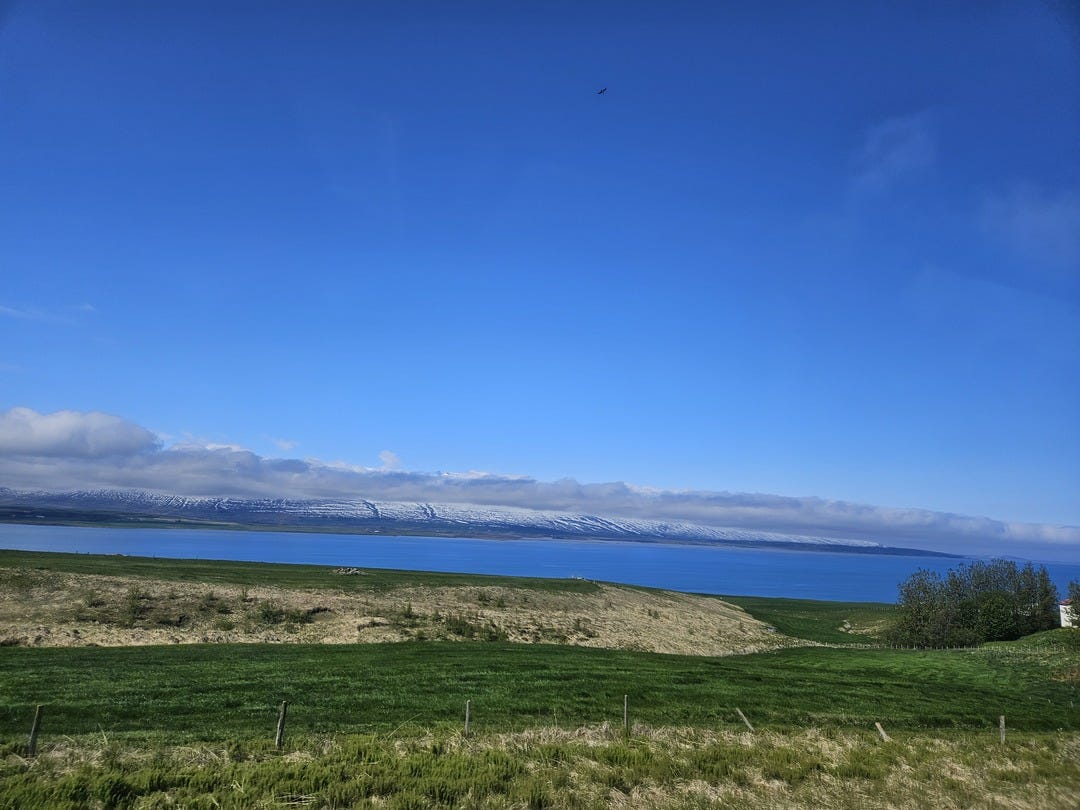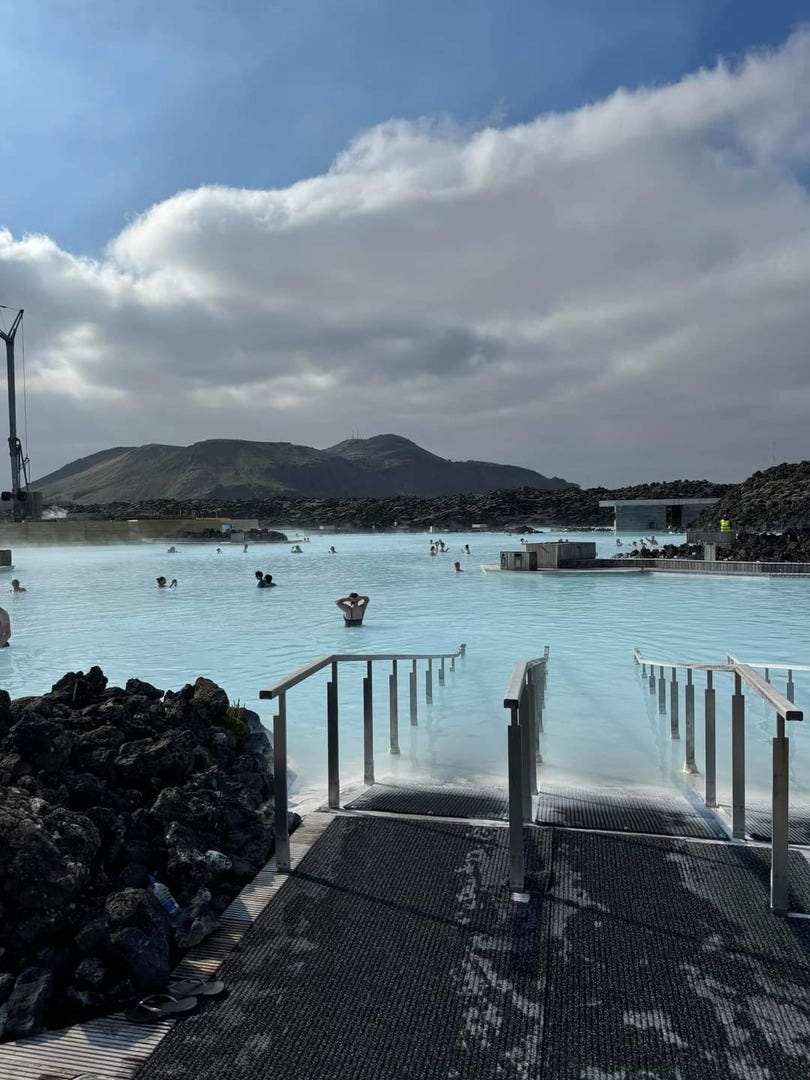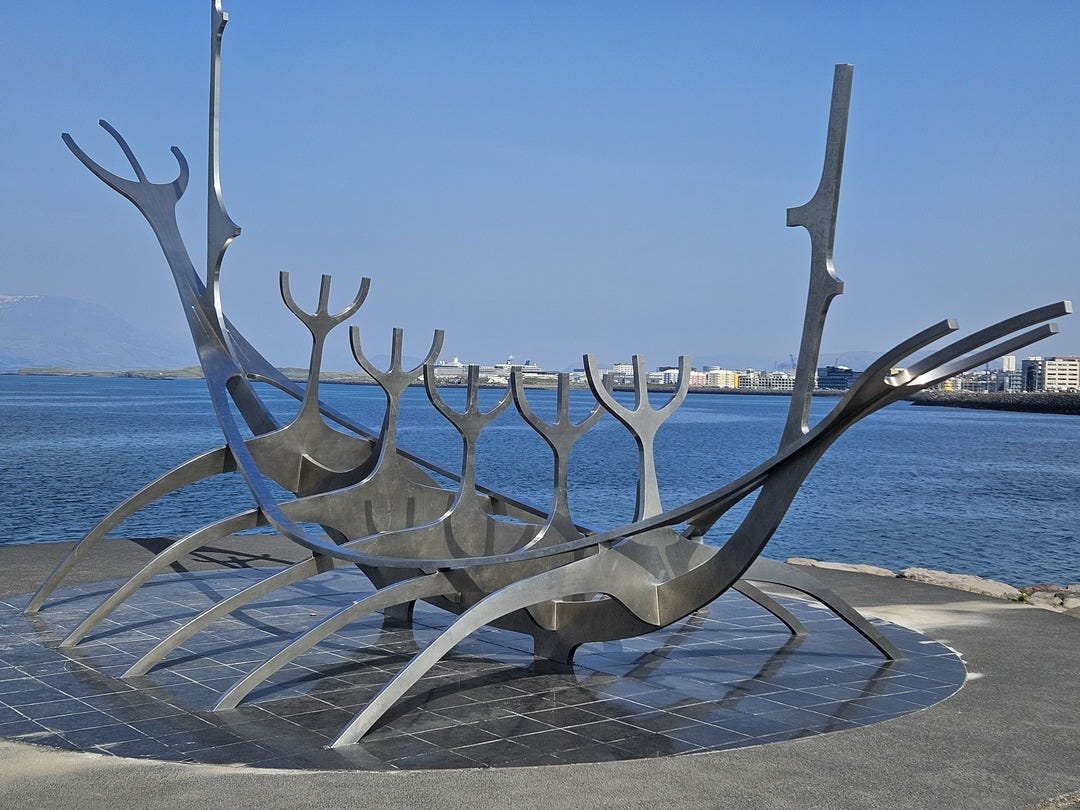Discover Iceland: 7 Compelling Reasons to Explore the Land of Fire and Ice
This is the first of several posts about my trip to Iceland in 2024. I was given the opportunity to cruise from Rotterdam, Netherlands to Iceland through my travel business. There was no way I was going to turn this down. I have wanted to visit Iceland for a very long time. When I was at university I had a Geology professor who told of the amazing scenery and geology of this fabulous country. I was hooked and curiously waiting for the right opportunity to make the trip.
If you are looking to experience incredible natural beauty, crystal clear air, a lengthy history, and warm, friendly people, you need to visit Iceland. From cascading waterfalls, deep rugged fjords, active volcanoes, and towering glaciers, Iceland offers an adventure like no other.
In this post, I will describe seven compelling reasons why Iceland should be at the top of your travel bucket list and address the most frequently asked questions. In other posts, I will discuss my excursions in Akureyri, Isofjordur, and Reykjavik. So, grab your sense of wanderlust, and let's discover some of the best reasons to visit the Land of Fire and Ice.
Reasons to Visit Iceland
1. Majestic Waterfalls:
Iceland is home to some of the most majestic waterfalls in the world. One of the most iconic is the mighty Godafoss Waterfall, located in northern Iceland, not far from Akureyri. Here, this thunderous horseshoe-shaped waterfall cascades in sections into a narrow, rugged canyon, creating an awe-inspiring spectacle. Take the time to get out of the car and walk along the path beside the raging torrent below. It is best to arrive early, as many tour groups visit this popular attraction.
Additionally, don't miss out on the spectacular Seljalandsfoss and Skógafoss in the southeast near Reykjavik. Here, you can walk behind the veil of water for a truly immersive experience. Both of these are best viewed in the summer for safety reasons since the water spray can freeze to ice in the winter and make the path very slippery.
These natural wonders and countless others showcase the raw power and beauty of Iceland's landscape, making them must-visit destinations for any traveler. It should also be noted that these cascading waters are crystal clear, ice-cold, and perfectly safe to drink. Just dip your glass and enjoy.
2. Enchanting Northern Lights:
One of nature's most breathtaking phenomena, the Northern Lights, or Aurora Borealis, dance across the Icelandic sky in a mesmerizing display of color and light. Iceland's proximity to the Arctic Circle makes it one of the best places in the world to witness this magical spectacle. Experiencing the Northern Lights in Iceland will leave you in awe of the wonders of the universe.
From late autumn to early spring, visitors can marvel at the shimmering curtains of green, pink, and purple as they sway and twirl across the night sky. Several tour providers offer northern lights tours to take you away from the city lights for a better experience. If you listen carefully, you can hear the explosions of colour through the darkened sky. Be forewarned, though, that they cannot be guaranteed. Just like animal sightings, they are part of nature and do not always perform for tourists.
Note: You will not see them in the summer since this far north provides daylight almost 24 hrs a day. It is too light to see them.
3. Dynamic Volcanic Landscapes:
As one of the most geologically active regions on Earth, Iceland boasts a landscape shaped by volcanic activity. From towering volcanoes to steaming geysers, the island offers a glimpse into the raw power of the Earth's forces.
Explore the otherworldly terrain of the Reykjanes Peninsula, home to the famous Blue Lagoon and the bubbling geothermal fields of Gunnuhver.
Note: Be sure to check local regulations regarding opening and closing due to recent volcanic activity.
Witness the dramatic landscapes of the Highlands, where rugged mountains and lava fields stretch as far as the eye can see. If you are game, other tour operators offer strenuous hikes along the Fimmvörðuháls trail (22km) to the eruption sites for a firsthand glimpse of an active volcano.
Iceland's volcanic landscapes offer endless opportunities for adventure and exploration, whether hiking through lava fields, exploring ice caves, or soaking in natural hot springs.
4. Glacial Adventures:
With its vast ice caps and glaciers, Iceland is a playground for adventure seekers and nature lovers alike. Take a guided glacier hike on Vatnajökull, Europe's largest ice cap, and marvel at the stunning ice formations and crevasses. Explore the ice caves beneath the surface, where sunlight filters through the translucent blue ice, creating a magical atmosphere.
For the ultimate adrenaline rush, embark on a thrilling snowmobile ride across the glacier, taking in panoramic views of the surrounding wilderness. Whether you're an experienced mountaineer or a first-time explorer, Iceland's glaciers offer an unforgettable experience that will leave you in awe of the natural world.
5. Rich Cultural Heritage:
Beyond its natural wonders, Iceland is also rich in history and culture. The National Museum of Iceland in Reykjavik is a great place to discover the Viking heritage and learn about the early settlers.
Visit Þingvellir National Park, a UNESCO World Heritage Site and the site of Iceland's first parliament, founded in 930 AD. Explore the charming turf houses of Laufás, where the farming community of seasonal workers lived near Akureyri.
Explore the coastal villages of the Snæfellsnes Peninsula or further north in Isafjordur, where traditional fishing culture thrives alongside modern innovation. Nearby in Bolungarvik, one of the oldest fishing stations, is a historic open-air museum at the water's edge.
Modern architecture, contemporary art, beautiful murals, and a new concert hall all contribute to Reykjavik's rising cultural diversity. From ancient sagas to current technologies, Iceland's cultural history has evolved and flourished, and it is as intriguing as its natural beauty.
6. Unique Wildlife Encounters:
Despite its rugged terrain, Iceland is home to a surprising variety of wildlife on land and at sea. Embark on a whale-watching tour from Reykjavik harbor and encounter majestic creatures such as humpback whales, minke whales, and orcas in their natural habitat.
Explore the bird cliffs of Dyrhólaey and witness thousands of puffins, guillemots, and fulmars nesting on the steep cliffs. Head to the remote Westfjords region to spot arctic foxes and reindeer roaming the pristine wilderness.
Whether you're a wildlife enthusiast or appreciate the beauty of nature, Iceland offers unforgettable encounters with some of the world's most fascinating creatures.
7. Warm Hospitality and Authentic Experiences:
Last but not least, one of the most compelling reasons to visit Iceland is the warmth and hospitality of its people. Despite its remote location, Icelanders are known for their friendly demeanor and welcoming attitude towards visitors.
Immerse yourself in the local culture by staying at a family-run guesthouse, where you can enjoy home-cooked meals and lively conversation with your hosts. Join a traditional Icelandic feast, or "kjötsúpa," and savor hearty dishes made from locally sourced ingredients.
Be sure to try an Icelandic Hot Dog. As simple as it sounds, its unique blend of lamb, beef, and pork gives the weiner just the right amount of spice. Traditional toppings are fried and fresh onions, tomato/apple ketchup, Icelandic mustard, and Remoulade Sauce (mayo) on a steamed bun.
Whether you're exploring the bustling streets of Reykjavik or venturing off the beaten path, the warmth of Icelandic hospitality is as memorable as the landscapes themselves.
Conclusion:
From majestic waterfalls to enchanting Northern Lights, Iceland offers many experiences for travelers seeking adventure, beauty, and cultural immersion. Whether you're exploring the volcanic landscapes of the Reykjanes Peninsula, marveling at the wildlife of the Westfjords, or driving the Great Circle route, Iceland's diverse attractions promise an unforgettable journey.
So, why wait? Discover Iceland for yourself and unlock the magic of the Land of Fire and Ice.
You might also be interested in what to wear in Iceland.
Common FAQ's For Visiting Iceland
Where is Iceland?
Iceland is an island nation between Greenland and Norway in the North Atlantic Ocean. It lies just south of the Arctic Circle and is known for its stunning landscapes, including glaciers, geysers, volcanoes, and hot springs.
How Do I Get to Iceland?
To get to Iceland, you can fly into Keflavík International Airport (KEF), which is the main international gateway located about 50 kilometers southwest of the capital, Reykjavík. Many airlines offer direct flights to Keflavík from major cities in Europe and North America.
While less common, you can take a ferry from Denmark to Seyðisfjörður in East Iceland.
You can also take a cruise. Norwegian is the most popular line that goes there, but Celebrity and others have itineraries at certain times of the year.
How Do I Get Around Iceland?
Renting a car is one of the most popular and convenient ways to get around Iceland. It allows you to explore the country's diverse landscapes at your own pace. The Ring Road (Route 1) circles the island and connects most of the major towns and attractions. Alternatively, you can use the extensive bus network, which offers routes to key destinations, but I am told that it is not always punctual.
Joining guided tours is always a great option for a more structured experience. To get around Reykjavík, public buses, taxis, escooters, and bicycles are readily available.
Do I Need A Visa?
Whether you need a visa to visit Iceland depends on your nationality. Citizens of the Schengen Area and many other countries, including the United States, Canada, and Australia, do not need a visa for short stays up to 90 days for tourism or business purposes.
If you are from a country that requires a visa, you must apply at an Icelandic embassy or consulate before your trip. Always check the latest visa requirements and regulations before planning your visit.
What is the Language?
The official language of Iceland is Icelandic, a North Germanic language that has remained relatively unchanged since medieval times. Most Icelanders also speak English, which is widely taught in schools and commonly used in tourism and business. Additionally, many Icelanders have a basic understanding of other Scandinavian languages, such as Danish and Norwegian.
What is the Currency?
The currency in Iceland is the Icelandic króna, abbreviated as ISK. The symbol "kr" commonly represents it, placed after the amount. While credit and debit cards are widely accepted nationwide, having cash on hand for small purchases or in more remote areas is a good idea. Currency exchange services are available at banks, airports, and various exchange offices. The current rate in mid-June 2024 is approximately 1000kr = $9.86 CAD
What is the Weather?
The weather in Iceland is highly variable and can change rapidly. Summers are generally cool, with average temperatures ranging from 10 to 15°C (50 to 59°F), while winters are relatively mild due to its proximity to warm ocean currents from the Caribbean. Winter temperatures hover around 0°C (32°F) in coastal areas but can be considerably colder on the exposed glacier areas.
Iceland experiences frequent wind and precipitation, making layers and waterproof clothing essential for travelers. The country also enjoys extended daylight hours in summer and very short days in winter.
Are you ready for an incredible experience in the Land of Ice and Fire?
You might also be interested in visiting other volcanic islands in the Azores.













